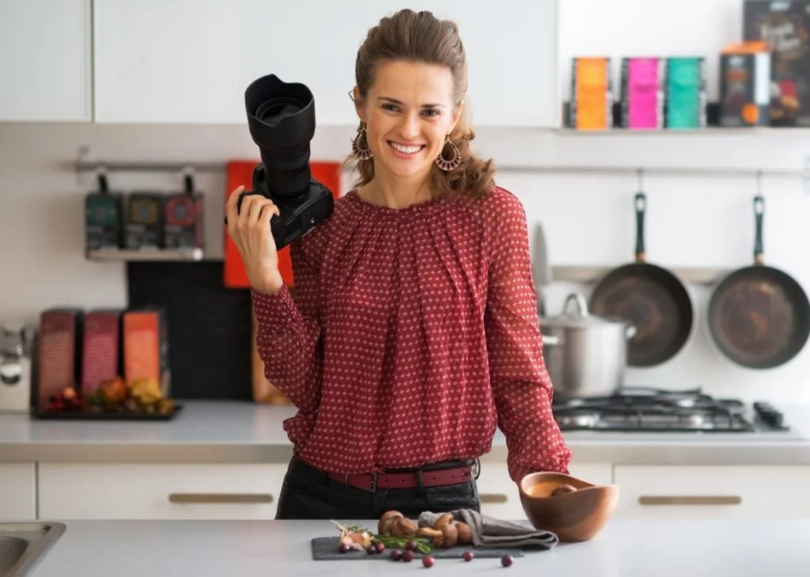verybody loves taking pictures of gorgeous-looking, mouth-watering food — even if you aren’t a food blogger. However, if you want to create a food blog of your own, know that your photography skills will be absolutely paramount to your success. Of course, practice makes perfect, which is why your hundredth food photo will be better than the first one. Still, bear in mind that taking great pictures of food is not easy — it’s an entire photography niche in and of itself. It’s not as easy as it looks, which is why we’re going to give you a couple of useful commercial photography tips obtained from professionals.
How To Do Commercial Photography With Food
Taking excellent photos of food seems easy — particularly because we’re talking about stationary objects.
However, once you get into it, you’ll realize that this is far more difficult than it seems.
First of all, you have to consider the lighting of your photos.
If there’s one tip for photo-amateurs that we’d single out, it would be to remain mindful of the light.
You need to consider how intense the light is, and precisely how it will hit the object of the photo — in this case, your food.
Then, spend enough time making adjustments.
Our advice is using natural light whenever you can.
Overhead lighting, flash, or lamps will produce a more artificial-looking photo that’s just not as good.
Also, don’t be afraid to move yourself and the food around until you find the very best spot in terms of lighting.
Sure, your first instinct will be to take a photo in your kitchen — that’s the most logical setting for a food blog.
But what if the lighting is better in your dining room during afternoon hours, or even early in the morning in your bedroom?

Besides lighting, you should also decide on the angle that you’ll use for your food.
This depends on the dish in question — stuff like pizza will obviously look best from an overhead shot, while a burger is best represented from the side.
If you’re going to shoot drinks, consider a 45-degree angle.
If you’re not sure what fits best for your particular food, move the camera around it and take different shots from which you can pick one later.
Also, you should do your best to minimize clutter as much as you can.
Sure, there are situations where a busy background or stuff like napkins and spoons can add something to your photo and make it more unique or memorable.
But in most cases, additional details detract from the food itself when it comes to commercial photography of food.
Commercial Photography Issues and Food
Even if you do your best when it comes to food photography, you may still find that your food photos just aren’t up to snuff.
That’s why we’re going to present you with a couple of tips on solving the most common issues that we’re constantly hearing about!
If your photos turn out blurry, the culprit is ironically clear — your camera is shaking.
There are a couple of solutions, the most obvious one being taking some time to practice holding the camera in a steadier fashion.
However, that’s not something everyone can do.
With that in mind, consider using a tripod that will ensure the utter stillness of your camera during the shoot.
Also, you can try cranking up the shutter speed — though that means needing more light as well.
If you’re willing to compromise on image quality, you can raise the levels of ISO so you don’t need as much light.

The second issue frequently found in commercial photography of food is that the colors you capture simply don’t look true to life.
This is something you can fix in post-processing. If you find that your dish seems too green, yellow, or blue — just fix the white balance in your software.
If this balance is properly adjusted, the colors should pop much more nicely.
Lastly, you may find that your photos simply don’t seem as professional as some that you’ve seen on other food blogs.
Know that commercial photography requires extensive experience and equipment that you might not have on hand.
For instance, professional photographers always use different lenses — these let them narrow down the DoF to make the object stand out.
They also use software for photography to play around with the sharpness and contrast of their work.
What Camera To Use?
If you want to start doing commercial photography of food, you won’t need a camera that’s too fancy right away.
In fact, a point-and-shoot device will be all you need in the beginning.
While you get some practice, even such a camera on the macro setting will do the trick.
Once you know that you’re ready for a more serious device, start saving money to buy a DSLR camera.

This kind of camera is a bigger investment, and you’ll need to upgrade it every couple of years — but they provide the amazing quality that you need.
Generally, most people use Canon or Nikon DSLR models — both companies manufacture incredible devices with minimal differences in quality.
What matters more is the price range that you’re working within. So, before you make a purchase, make sure to read a lot of reviews.
Then, visit a nearby photography store. You want to try out a camera before you buy it.
Also, if you’re going to do this professionally, remember that you’ll need to buy a camera lens as well.
Depending on the type of commercial photography that you’re going to do besides food, you will need to pick this just as carefully as you would a device.

